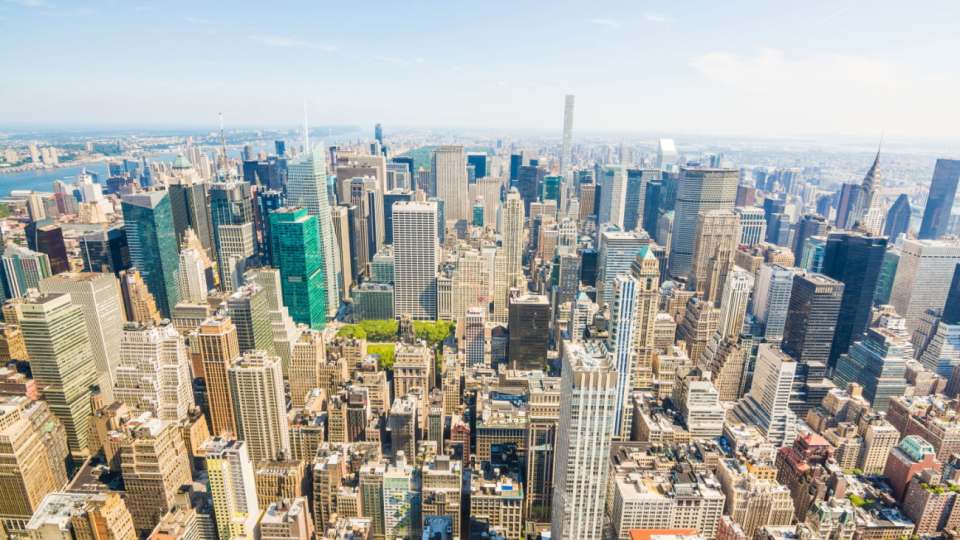Stubbornly Low Demand Points to Another Difficult Year for Office Space
Office remains the hardest-hit commercial real estate asset class as demand continues to suffer due to companies reevaluating office footprints. Consequently, office properties are facing rising vacancies, as evidenced by the newest national office report by CRE listing and research platform CommercialEdge.
“The lack of transactional volume makes comp identification more difficult, but lower-end buildings not in prime locations are suffering, and we expect that trend to only accelerate,” said Peter Kolaczynski, director of CommercialEdge.
In this context, many offices are selling for a discount — especially in subpar locations — and the downward pressure exerted on asking rates determined by low occupancy is likely to remain a pain point for the industry.
National Vacancy Rate Reaches 18%, Miami Records Lowest Vacancy Nationally
Office properties nationally reached a vacancy rate of 18% in January, which was up 130 basis points (bps) compared to the same period in 2023. In fact, rising vacancies were a factor in the majority of major commercial real estate markets with 18 of the 25 covered by the CommercialEdge report witnessing a rise.
Office space in Detroit had the highest overall vacancy rate at the start of the year as well as the highest year-over-year increase in vacancy rate, reaching 25.4% after a 550 basis point hike. Other major markets — like Houston; San Francisco; Seattle; Denver; and Austin, Texas — also recorded vacancy rates in excess of 20%. To that end, the study notes that Western tech markets suffered the most when it comes to climbing vacancies. For instance, vacancies in San Francisco offices increased 490 basis points year-over-year (Y-o-Y), leading to one of the highest vacancy rates nationally. Similarly, vacancy rates in Seattle and Denver increased by 450 and 390 basis points Y-o-Y, respectively.
Conversely, the lowest office vacancy rates were recorded for office space in Miami (12.4%), Boston (12.5%) and Charlotte, N.C. (12.9%). Incidentally, Charlotte was also one of the markets where occupancy rates rose year-over-year, alongside cities such as Tampa, Fla. (up 3.1%), and Atlanta (up 2.2%).
Manhattan Holds Highest Listing Rate, Despite 10% Y-o-Y Drop
Nationwide listing rates stopped at approximately $37 per square foot of office space, down 1.8% Y-o-Y. More precisely, when looking at asset class, A and A+ office spaces saw a 2% drop in listing rates to reach $45.80 per square foot, while class B and class C saw increases of 0.4% and 5.7%, respectively. This may indicate that owners and tenants alike are focusing on higher-quality office spaces within their respective categories, especially given rising vacancy rates.
Yet, considering market particulars, office space in Manhattan still holds the highest full-service equivalent listing rate of $68 per square foot, though that rate is a decline of almost 10% Y-o-Y — the steepest drop out of all of the markets in the analysis and tied with Charlotte, N.C. In second place, San Francisco office space asked an average of $62 per square foot, which was down 8.7% compared to last year as high vacancies continue to put pressure on the market. At the same time, prices in the Bay Area office market also dropped, albeit at a slower rate of 4.6% Y-o-Y to reach $54 per square foot.
At the opposite end, seven markets saw year-over-year increases in listing rates, ranging from Boston’s 25.8% to 0.7% in Minneapolis-St. Paul. In the case of the former, the life sciences boom continued to propel Boston’s office sector, granting it the fourth-highest price per square foot nationwide (tied with Miami). Other markets with year-over-year average lease price hikes included New Jersey (5.4%); Tampa, Fla. (5.1%); and Atlanta (3.6%).

